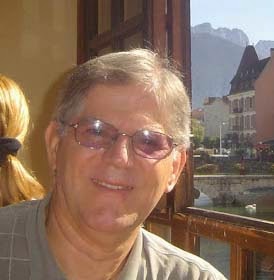by Tom Kando
In my previous post, I argued
that when it comes to variations in violence and murder rates, AGE explains
more than just about any other variable. In other words, Auguste Comte was
right when he said that demography is destiny.
2. Today I want to show the
importance of demography in another related area, namely (im)migration and
population shifts. This, too, is something that threatens a lot of people today, something quite
topical in the aftermath of the Charlie Hebdo bloodbath and the
incessant chatter about terrorism. Many
Europeans fret about the “Arabization” of their continent, and many Americans fear the “Latinization” of their
country. The reaction in both cases is
Eurocentric Christian nativism. Europeans are marching and rallying behind
nativist leaders such as Marine Le Pen and Geert Wilders. Some, like Hungary’s Jobbik Party, attack gypsies.
In the US, many Republicans want to
evict millions of Hispanic immigrants. The unifying theme on both sides of the
Atlantic is: “Save Western
civilization.”
But everyone is barking up the
wrong tree. No amount of demonstrating
and legislating will make any difference, because of one simple fact: The
birthrate.
Middle-class Europeans (and Americans) are not replacing themselves. Therefore, they
have to be replaced by immigrants, many of them people of color, and those
immigrants’ children.
This is happening in Europe, in
Russia, in Hungary, in Germany, in Scandinavia,
and also in America. It happened in the former Yugoslavia, where it led
to nasty wars in Bosnia, Serbia, Croatia
and Kosovo. The dwindling Serbs went to war against the Muslim Bosnians, who had become more numerous. Losing the battle of numbers, the Serbs thought that
genocide might be the solution.
The only thing that would "save” the European middle class would
be to have more babies. But this won’t happen.
Historically, the upper strata
and the bourgeoisie have never been able
to replace themselves. Their birthrates have always been too low for that. They have always needed the higher fertility of the lower
strata. The nobility was never able to
replace itself. It needed demographic
help from the commoners. The urban population has always had to be
replenished from the rural population. Affluent whites need the greater fertility of poor people,
many of them people of color. The affluent West cannot replace itself without
Third World assistance.
Demographic transition theory
explains all of this, as did the great
Muslim sociologist Ibn Khaldun (1332-1406) six centuries ago. There has always
been a circulation of groups, of urban
elites, of nationalities.
Once, Europe was largely
populated by Romans. But the Romans didn’t replace themselves. In Gaul, in Spain,
in Pannonia, in Dalmatia and in large chunks of Italy, they were replaced by
the incoming immigrants, Franks, Goths, Lombards, Burgundians, etc., and
by those
tribes’ descendants. The folks formerly thought of as alien and
uncivilized ended up in charge.
It will be the same for Europe
and possibly for North America. The West will be a very different place,
both culturally and demographically. It
will be diverse, heterogeneous and
colorful. It will be an amalgam of the West and the East. Societies’ identities
inevitably change, and this may be
accompanied by strife, power struggle and violence. The old resists
the new. This is normal.
There will be new
ruling classes, the culture will be a mix of Mediterranean, Middle
Eastern and Western (Christian) culture. Some day the great universities, the
research centers and the financial
hubs dominating the world may be in Africa.
For two thousand years,
Christianity has been the dominant world religion. Nothing is forever. Could the next several centuries be the age
if Islam? That faith is already the largest one on earth, with 1.5 billion
adherents. Its members are also the fastest growing segment of the world population. In addition, Islam
proselytizes, it exports millions of people
to the West, and its activities are sometimes militantly aggressive, as
in Isis, Al Qaeda, the Taliban, the
Uyghur in China, the Boko Haram in Nigeria, and other groups in the
Philippines, the Sudan and elsewhere. Peacefully or not, Islam is in the
ascendancy.
Personally, I abhor theocracy,
and I would prefer it if social and political change were secular. But that is
besides the point.
The main point of this article
has been to show that the Third World is in the ascendancy because it
represents a growing proportion of the world’s population. As Table One shows (World
Population; Estimated World Population), since 1900, the
West’s share of the world’s population
has declined from 29% to 19%, while that of the Third World has gone up from
71% to 81%.
Throughout history, groups
and cultures supersede each other,
and much of this is based on demographic
shifts, or as Comte said: Demography is Destiny.
Table One:
World’s Population, by Region, 1900 and 2015
Region
|
Population in 1900
|
Population in 2015
|
1. North America
|
100 million 6%
|
400 million 6%
|
2. Europe + Former USSR
|
400 million 24%
|
1 billion 14%
|
3. Latin America
|
50 million 3%
|
600 million 8%
|
4. China
|
490 million 29%
|
1.4 billion 19%
|
5. India
|
290 million 17%
|
1.2 billion 17%
|
6. Middle East
|
40 million 2%
|
300 million 4%
|
7. Rest of Asia
|
150 million 9%
|
1 billion 14%
|
8. Africa
|
120 million 7%
|
1 billion 14%
|
9. Rest of World
|
60 million 3%
|
300 million 4%
|
World Total
|
1.7 billion
|
7.2 billion
|
West
|
500 million 29%
|
1.4 billion 19%
|
Third World
|
1.2 billion 71%
|
5.8 billion 81%
|
Now, don’t misunderstand me: I did not suggest that demography is the sole cause of crime and violence, and neither am saying that population size and density are the sole determinants of migration.
Obviously, there are other enormously important factors, none more important than economic conditions. As Madeleine Kando wrote, “if all the sugar is on one side of the plate that’s where the ants will go.” There are “push” factors such as the destruction of agrarian economies and the rising rural poverty, which cause masses to move to the cities. There are “pull” factors such as industrialization, which creates jobs. Internationally, the West - Europe and North America - offers the lure of opportunity and affluence.
But this is not an essay about the economics of migration. My intent here has been to focus on population per se. My metaphor has been that of the communicating vessels.
Obviously, there has to be economic incentive. “Communicating vessels” is not the entire story. People don’t flock to the Sahara by the millions, even though it’s empty. Conversely, thousands of people still seek to move to the Netherlands, one of the most densely populated countries on earth, because it is still very affluent and enjoys a vibrant economy.
Yet, throughout history, some areas have been more populated than others, some places experienced population growth and even explosions, while other areas remained or became relatively “empty.” As a result, great migrations occurred. The Roman Empire was invaded. Nordic and Asian people migrated West. The Vikings were forced to move South when they became too numerous. The industrial and scientific revolution caused the European population to explode, and to send its surplus to North America, Australia and other relatively “empty” continents. Note that Europeans did not move massively to China, Indochina, Indonesia, India and Africa, even though they did imperialize those areas as well. Why not? Because those regions were already populated.
Today, the communicating vessels are operating in the opposite direction. As the native population of Europe and the rest of the West is emptying out, that vessel becomes replenished by migrants from an increasingly overpopulated Third World.
© Tom Kando 2015








